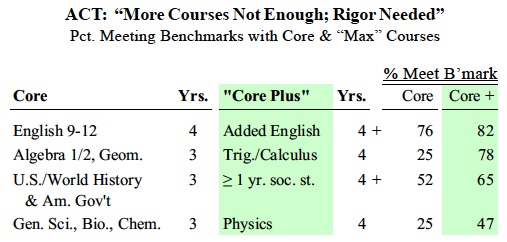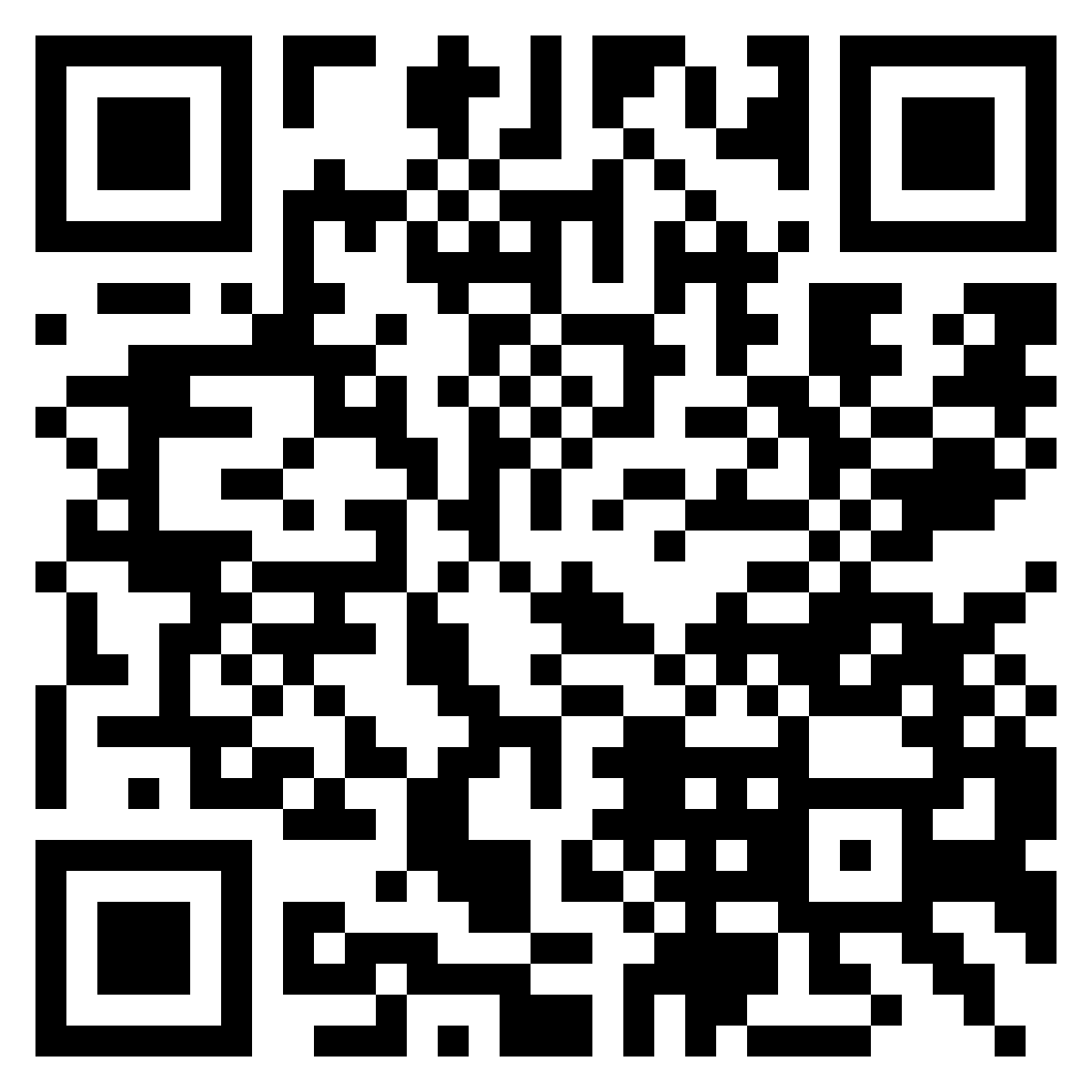Search Results for: "Core Plus"
Analysis of Connected Math and Core Plus Textbooks
A reader deep into math issues emailed these two reviews of curriculum currently used within the Madison School District: Connected Math (Middle School); R. James Milgram: The philosophy used throughout the program is that the students should entirely construct their own knowledge and that calculators are to always be available for calculation. This means thatstandard […]
Math Rebellion Up North: Ashland Students Favor New Algebra Course, Fewer Enroll in Core Plus
Kevin O’Brien: An overwhelming majority of Ashland students who were given the choice between traditional math and the Core Plus curriculum decided to take algebra I courses next school year, according to a report given Monday by Ashland High School Principal Steve Gromala. In a report to the Ashland School Board, it was noted that […]
A Study of Core Plus Mathematics Students Attending Michigan State University
Richard O. Hill and Thomas H. Parker: Department of Mathematics – Michigan State University [Complete Study: PDF]: One measure of the effectiveness of a high school mathematics program is the success students have in subsequent university mathematics courses. As part of a large-scale study of Michigan students, we analyzed the records of students arriving at […]
(2009) What impact do high school mathematics curricula have on college-level mathematics placement?
James Wollack and Michael Fish: Major Findings CORE-Plus students performed significantly less well on math placement test and ACT-M than did traditional students Change in performance was observed immediately after switch Score trends throughout CORE-Plus years actually decreased slightly Inconsistent with a teacher learning-curve hypothesis CORE-AP students fared much better, but not as well as […]
Seeking Greater High School Rigor:
Wisconsin ACT Scores Show College Readiness Gap
Wisconsin Taxpayer’s Alliance [156K PDF Report]:
Wisconsin high school seniors have the second-highest average ACT scores in the U.S. However, ACT finds that only 29% of those tested have a 50% chance of earning a B or a 75% chance of earning a C in each of four college freshman courses: English composition, algebra, social sciences, and biology. Among African-American students, that chance is 4%.
In studying 2007 high school graduates, ACT found that only 29% (boxed in table below) of 46,430 Wisconsin students tested met college-readiness benchmarks in four core subject areas; the national percentage was even lower (23%). In its report “College Readiness: Rigor at Risk,” the ACT testing service concluded that “our high school graduates are in danger of entering college or the workforce without sufficient academic preparation.”
The ACT testing service has urged high schools to offer–and students to pursue–core curricula of sufficient depth and rigor to ensure college success. The minimum core (detailed in the table above, col. 1) includes four years of English and three years each of social studies, math, and science. Unfortunately, ACT has found that the current “quality and intensity–inother words rigor–of the high school curriculum” is not adequate to prepare students for college unless they take courses beyond the core. Calling that “neither realistic nor justifiable,” ACT says it is “essential” that we “improve the quality of core courses that really matter in preparing students for college and work.”
The testing firm goes onto observe that much of the loss in momentum toward college readiness “appears to be occurring during the last two years of high school.” Data in the table support ACT’s concern. The first four columns show the “core” curriculum, as well as a maximal course load (“core plus”) that includes math through calculus. The final two show the percentages of Wisconsin-tested students who met the readiness benchmarks, having pursued one of the two curricula. The need for rigor in all high school courses is reflected in the “collegeready” percentages of Wisconsin students taking four or more years of classes in all areas (“core +”).
Madison Math Task Force Minutes
March 7, 2008 Meeting [rtf / pdf]. Well worth reading for those interested in the use of Connected Math and Core Plus, among others, in our schools.
A few interesting items:
- Mitchell Nathan proposed a change to the name of the Work Group to more authentically describe its intent. There was consensus to accept the change in designation for the Work Group from “Curriculum Review and Research Findings” to “Learning from Curricula.”
- “Addresses the misconception that there is one curriculum. There are a number of curricula at play, with the exception of the narrowing down at the middle school level, but teachers are also drawing from supplementary materials. There are a range of pathways for math experiences. The work plan would give an overview by level of program of what exists. “
- “Could say that variety is good for children to have places to plug into. Could expand on the normative idea of purchasing commercial curricula vs. richer, in-house materials. Standards tell the teachers what needs to be taught. Published materials often are missing some aspect of the standards. District tries to define core resources; guides that help people with classroom organization.” Fascinating, given the move toward one size fits all in high school, such as English 9 and 10.
- “Want to include a summary of the NRC report that came out in favor of Connected Math but was not conclusive—cannot control for teacher effects, positive effects of all curricula, etc. “
- “Would like to give some portrayal of the opportunities for accelerated performance — want to document informal ways things are made available for differentiation. “
- “Include elementary math targeted at middle school, e.g., Math Masters. There is information out there to address the Math Masters program and its effect on student achievement.”
- “Data are available to conclude that there is equity in terms of resources”
- “District will have trend data, including the period when Connected Math was implemented, and control for changes in demographics and see if there was a change. No way to link students who took the WKCE with a particular curriculum experience (ed: some years ago, I recall a teacher asked Administration at a PTO meeting whether they would track students who took Singapore Math at the Elementary level: “No”). That kind of data table has to be built, including controls and something to match teacher quality. May recommend that not worth looking at WKCE scores of CM (Connected Math) student or a case study is worth doing. “
- The Parent Survey will be mailed to the homes of 1500 parents of students across all grades currently enrolled in MMSD math classes. The Teacher Survey will be conducted via the district’s web site using the Infinite Campus System.
- MMSD Math Task Force website
Columbia (Missouri) Parents for Real Math
Math Excellence in Columbia Missouri Public Schools:
To: Columbia Public Schools Board of Education and Superintendent Phyllis Chase
An increasing number of parents and community leaders have expressed concern about the various math curricula currently used in the Columbia Public Schools (CPS). These experimental math programs go by the names of Investigations (TERC), Connected Math (CMP) and Integrated Math (Core Plus) and they emphasize “self-discovery” over mathematical competency. We are concerned because these curricula have been discredited and abandoned in other regions of the country after they failed to deliver demonstrable results. The failed curricula are currently the only method of instruction in the elementary grades and middle schools. At higher grade levels, CPS has actively discouraged students from enrolling in math courses that place more emphasis on widely accepted standard methods. And, while implementing and evaluating these programs, the Columbia School District did not provide open access to meetings or adequately consider the concerns of professional mathematicians, parents and community leaders.
Therefore, we, the undersigned, would like to express our deep concern with the following issues and to propose that the Columbia School District adopt the following goals:
1. Protect the right of students to become computationally fluent in mathematics. We expect students to receive direct instruction in standard algorithms of all mathematical operations and laws of arithmetic so that they can master the skills that allow fast, accurate calculation of basic problems. This goal cannot be met with the current Investigations/TERC math curriculum for lower grade levels.
2. Ensure that math instruction is flexible enough to allow for various learning styles and is age and grade-level appropriate. The elementary level should focus on math standards that will build a solid base of mathematical skills for ALL students. Middle school curricula should build a bridge between the fundamental arithmetic learned in elementary school and the more abstract concepts taught in high school. At both the elementary and middle school levels the curricula should allow teachers the flexibility to meet the needs of all types of learners. This goal cannot be met with the Connected Math program currently used in middle and junior high schools.Related: Columbia Parents’ blog site, which offers a number of useful posts. [RSS]
Math Forum Audio / Video.
Via a reader.
The Politics of K-12 Math and Academic Rigor
The Economist: Look around the business world and two things stand out: the modern economy places an enormous premium on brainpower; and there is not enough to go round. But education inevitably matters most. How can India talk about its IT economy lifting the country out of poverty when 40% of its population cannot read? […]
A History of Changes at West
Last spring a longtime parent at West HS was asked to write a description — content area by content area — of the curriculum changes that have occurred at West HS in recent years that have affected the academic opportunities of West’s “high end” students. Below you will find what she wrote. It includes changes […]

